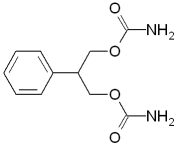A "Dear Doctor" letter last July recommended the immediate withdrawal of patients from the anti-epilepsy drug Felbatol. As of Aug. 18, the drug had been linked to 21 cases, including three deaths, of aplastic anemia--a rare, frequently fatal disease in which the bone marrow stops making blood cells. The drug manufacturer, Carter-Wallace, Inc., sent the letter to 240,000 physicians on FDA's recommendation.
"We strongly recommend that patients consult their physicians as soon as possible, but it is critical that they not discontinue the drug on their own, due to the risk of seizures," said FDA Commissioner David A. Kessler, M.D.
Felbatol was approved in August 1993 for partial seizures in adults and for Lennox-Gastaut syndrome, a serious form of childhood epilepsy. (See the November 1993 FDA Consumer Updates section.)
The rate of aplastic anemia cases reported with Felbatol appears to be about 100 or more times higher than expected. No cases were observed in pre-market testing involving 1,000 patients. All reports of aplastic anemia associated with Felbatol were from patients taking the drug for at least five weeks.
In rare cases when Felbatol is continued, FDA suggests careful monitoring. However, there is no evidence that even close monitoring can protect against the occurrence of aplastic anemia.
COPYRIGHT 1994 U.S. Government Printing Office
COPYRIGHT 2004 Gale Group



